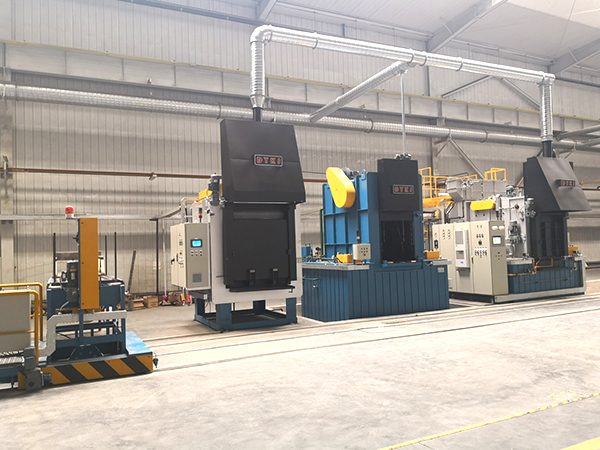400-000-0000

Most multi-purpose furnace heat treatment furnaces are made of refractory materials and thermal insulation materials. This is because the heat treatment furnace is usually at a high temperature when it is working. All non-metallic materials that can withstand high temperatures and withstand the physical and chemical effects of high temperatures are collectively referred to as refractory materials. When designing and constructing the heat treatment furnace, the rational selection of refractory materials and insulation materials is of great significance to meet the requirements of the heat treatment process, increase the service life of the heat treatment furnace, save energy and reduce costs. Here we first understand the commonly used refractories.
Multi-purpose furnace tooling hangers, including hangers, fan-shaped block hanging trays, hangers, positioning slots, furnace supports, hanging holes, hanger platforms, and workpieces, which are characterized in that the entire set of hangers is divided into hangers and fan-shaped blocks There are three parts of the hanging tray and the hanger. The hanger has a modular design. The hanger is designed as a split snap ring type, a T-shaped hole type, a card cap type, and a pin type. The combination of the hanging trays with different holes can be used to hang different parts. When the shape of the parts needs to be changed, it is not necessary to replace the entire sling, only the sling or the sling can be replaced. Therefore, the life of the entire sling can be prolonged, the consumption of heat-resistant steel materials of the sling can be saved, and the sling can be reduced. Production cost of heat treatment.
Why multi-purpose furnace can achieve high quality carburizing
1. Water will decompose oxygen and hydrogen at high temperature. Oxygen will oxidize steel parts. Hydrogen is a decarburized atmosphere. Therefore, the less the water content, the better.
2. The oxygen probe is used to measure the carbon potential during carburizing. The oxygen probe is used to indirectly control the carbon potential by measuring the oxygen content of the atmosphere in the furnace. If the methanol contains more water, the oxygen decomposed from the furnace will interfere with the oxygen probe. The measurement of carbon makes it difficult to control the carbon potential, resulting in an error between the carbon potential displayed on the meter and the carbon potential in the furnace, which affects the control of carburizing and the quality of carburizing.
